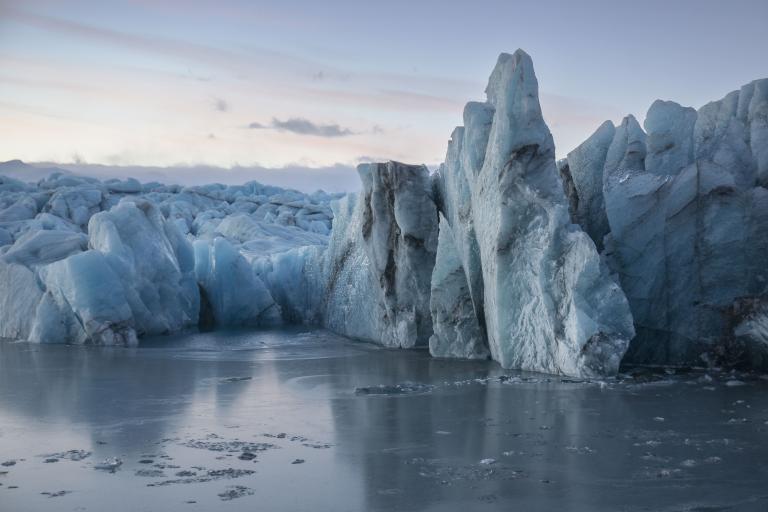The ScienceTourism project designs content for climate science communication and nature interpretation to be used in scientific tour products.
Glacier morphology and processes
The South East Iceland Nature Research Center (Náttúrustofa Suðausturlands) made different descriptions of glaciers of southeast Iceland on basis of research from various Iceland glaciologists:
Breiðamerkurjökull 2121
The shape of things to come
This artist’s impression shows how Breiðamerkurjökull and Jökulsárlón could look in the future, if the current rate of glacier recession remained same for another two hundred years. The rate of retreat of this glacier and other glaciers in the world is controlled by the rate of greenhouse gas emissions to the atmosphere. If emissions will be substantially reduced on a global scale in coming decades, Breiðamerkurjökull will continue to recede for a while but will stabilize and remain one of the major outlet glaciers of the Vatnajökull ice cap. The fate of glaciers in the world is in our hands today.
Projecting the future of glaciers relies on continued improvements in data and methods. While the model results vary, they all show the importance of meeting the Paris Agreement targets for reducing greenhouse gas emissions. The effect will not only be visible in reduced mass loss of glaciers in the world, but more importantly will also reduce the negative effect of climate change on nature and humanity on Earth.
Video by: Alice Watterson, Kieran Baxter, Snævarr Guðmundsson and Þorvarður Árnason Based on data from: The Glacier group of the Institute of Earth Sciences*, University of Iceland, the Icelandic Meteorological Office, and the South East Iceland Nature Research Center. Special thanks to: Guðfinna Aðalgeirsdóttir, Rany Bechara, Helgi Björnsson, David Ostman and Finnur Pálsson
* Björnsson H, Pálsson F (2020). Radio-echo soundings on Icelandic temperate glaciers: history of techniques and findings. Annals of Glaciology 1–10. https://doi.org/10.1017/aog.2020.10
Melting giants
Repeat photography is a method used for research on climate change, as well as for visualization of its effects, to gain a better understanding of how the environment changes over time. The method is based on the fact that a person returns to the same place in nature to take standard photographs using traditional methods. Such reconstruction with traditional imaging approaches can also be enhanced by adding virtual reality reconstruction to the methodology. This product experiments with the use of Google Earth Studio as a tool for virtual reality reconstruction, as well as exploring the experience of applying reconstruction in the field:
Glacier Stories
Glacier Stories (Jöklasögur) is an ongoing series of visual portraits of Icelandic glaciers. Glacier stories are based on interdisciplinary research designed to underscore climatic changes and their effects on glaciers in southeast Iceland, told predominantly through a collection of visual mediums. At the moment there are visual portraits of the following glaciers:






